Disclosure: Meeple Mountain received a free copy of this product in exchange for an honest, unbiased review. This review is not intended to be an endorsement.
Dwarf is a one to three player worker placement game of mining, forging, and battling in the shifting tunnels and caverns of an ancient mountain hold. Players take on the role of different Dwarf clans and attempt to contribute the most to society. This is done, of course, by forging useful and beautiful tools and trinkets, but also by amassing piles of gold and steel. Dwarf society is peculiar, to say the least. Throughout their mining and crafting journey, players will also have to deal with dragons, orcs, and other baddies that dole out punishment to every player unless some brave soul goes off to confront them. That’s a lot for each clan to handle, but navigating the trials of the mountain and emerging victorious will cement a clan’s name for eternity.
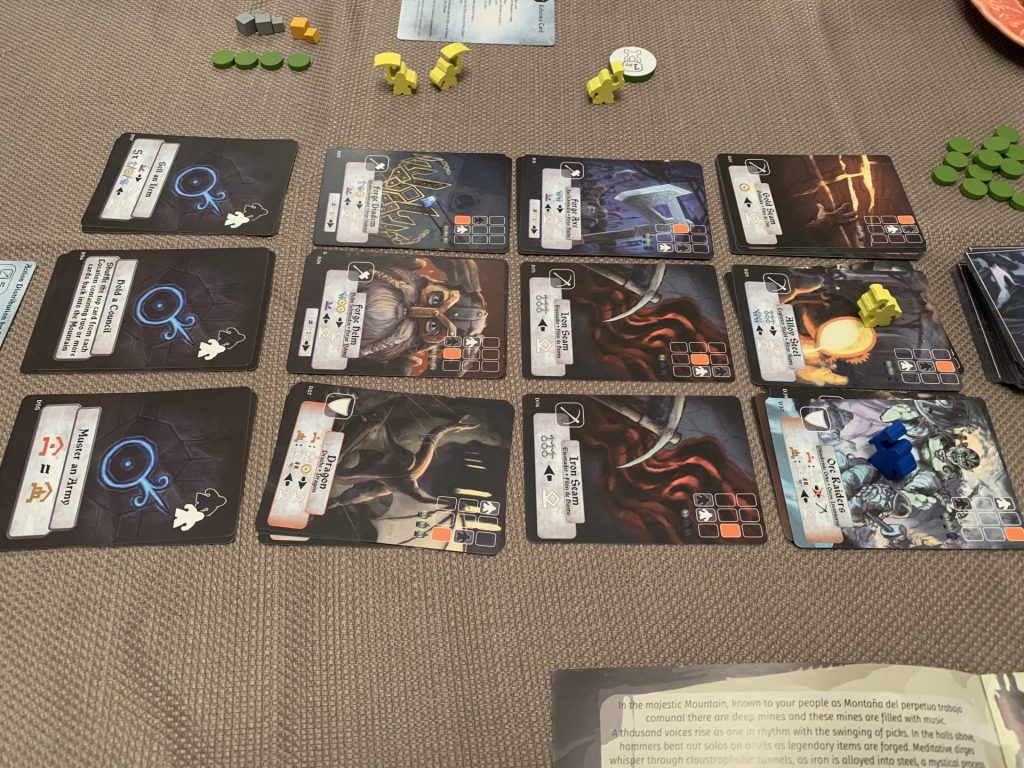
How does Dwarf Play?
Dwarf is a card-based worker placement game with some interesting mechanics at play. The mountain is a set of nine cards arranged in a three-by-three grid with three small decks of special actions below it. Each card in the mountain grid has an action listed on it, like mine three iron, or smelt iron into steel. At the start of each turn, two new cards are drawn from the mountain deck and placed on their indicated space within the grid. This covers up the previous action and offers a new one, meaning that the board is constantly shifting, and strategizing must adapt to match.
Starting with the first player and proceeding clockwise, players place a dwarf worker on a card. This prohibits other dwarfs from also occupying that card. Once every dwarf is placed, actions are taken in a specific order. This starts with the help action, which allows a player to take two extra dwarfs and place them on open cards. Defense actions happen when a dwarf occupies a monster card. Their presence earns them a medal and prevents whatever bad thing the monster would do to every player from occurring. Uncovered monsters deal their damage, which usually results in the loss of iron, gold, or in the case of orcs, the ability to perform mining actions. Mining actions follow with players acquiring the resources their dwarfs are standing on. Finally, forging allows the trading of resources for the all-important items. When one player gathers four items, the game ends, but they are not guaranteed victory. Victory comes from having the most of two of the three key resources: gold, steel, and items.
The sequence of play is quick and thoughtful. Players all assess the new layout of the mountain and try to plan the best set of moves. Gauging where your opponents may want to place dwarfs, where you need to go to gain the three key resources, and watching out for monsters are all key to victory. Since each player is restricted to two dwarfs per round, the help action is particularly important, and therefore highly contested. If the first player takes this action, they must pass their first player token clockwise, making it, along with pretty much everything else in Dwarf, a tricky choice.
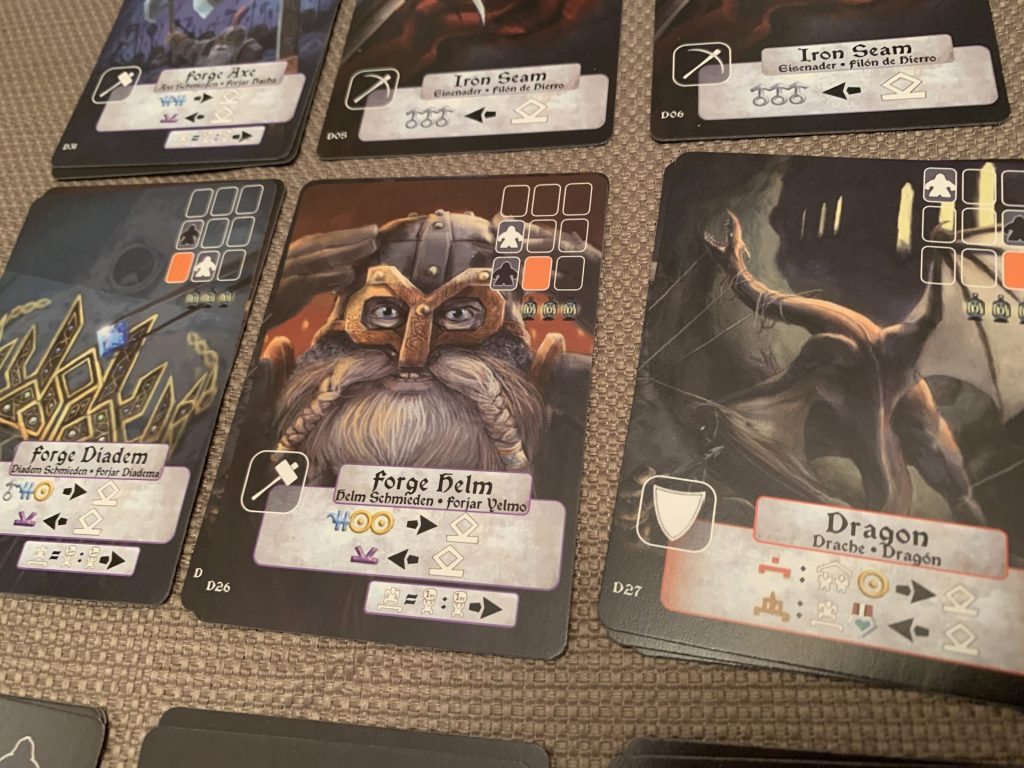
They’re Always Digging Too Greedily and Too Deeply
Monsters are a great addition to this set of tricky choices. Since they deal their damage to each player, there is incentive to place a dwarf to counter them. But doing so only rewards a medal, something that can only be used to lessen the cost of using a special action. Trying to play chicken with your fellow players is a lot of fun, each trying their best to get the most out of the turn before someone caves and blocks the monster. Other times, it may be beneficial to let the dragon attack, knowing you have no gold to lose but your opponents do. Since the deck is randomized, some periods may be intensely monster filled, leading to each player frantically trying to cover up the baddies and prevent a tidal wave of lost goods. Sometimes cooperation is the best strategy!
The special actions add a little more to the gameplay, but in my experience, not as much as I was expecting. These actions include shuffling a stack within the grid, or placing a desired card on top, but they come at the cost of both dwarf workers. If a player gives up four medals though, they can activate these special actions with only a single dwarf. They add depth, but again, it often felt like we were better served just placing dwarfs in the mountain proper to gain resources.
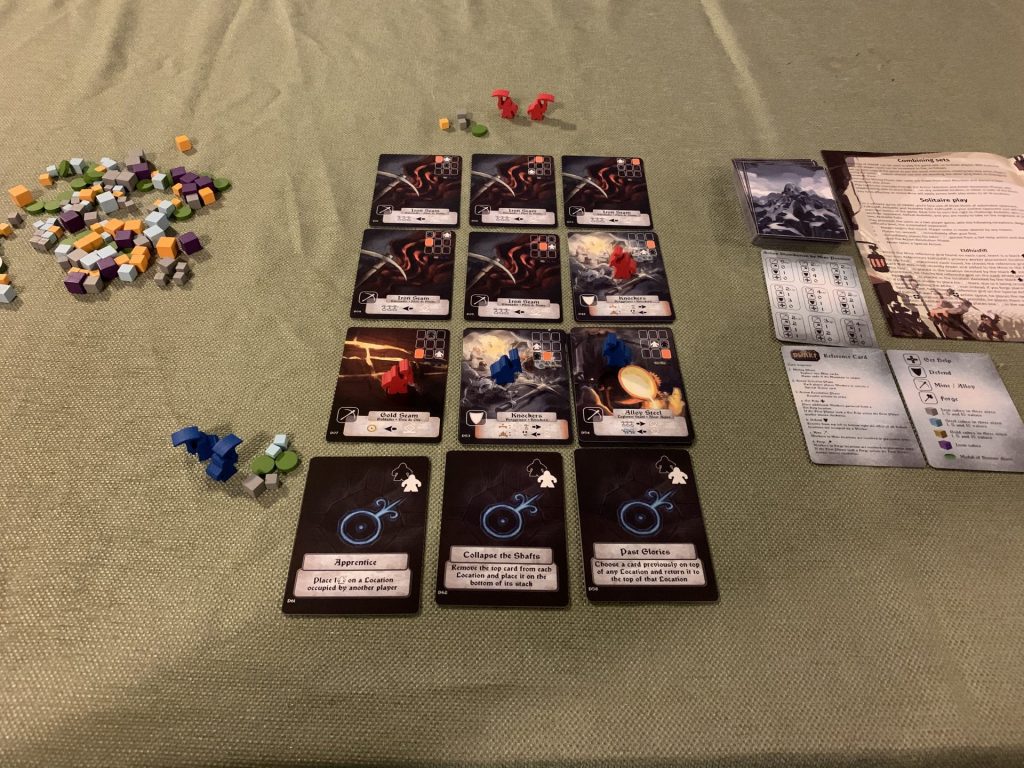
Time Flies under the Mountain
Dwarf is a quick game, and I think that plays to its advantage. There is a tight rhythm to drawing cards, placing dwarfs, collecting resources, and resetting. The competition comes from snarky side eyes as an orc card is left open or the only gold seam currently visible is snatched away. If the game was any longer, I might say it dragged, but at around 20 minutes or so once everyone knows what they’re doing, this is a great little filler game.
There is also a fully developed three-level solitaire game, and I can confirm that Dwarf plays very well at one, if for very different reasons. Trying to exploit the automated movement of your dwarf opponents is good fun, and playing solitaire is even faster than the regular game, making it a great lunch time play if you just want to spend some time away from a screen before settling back into work.
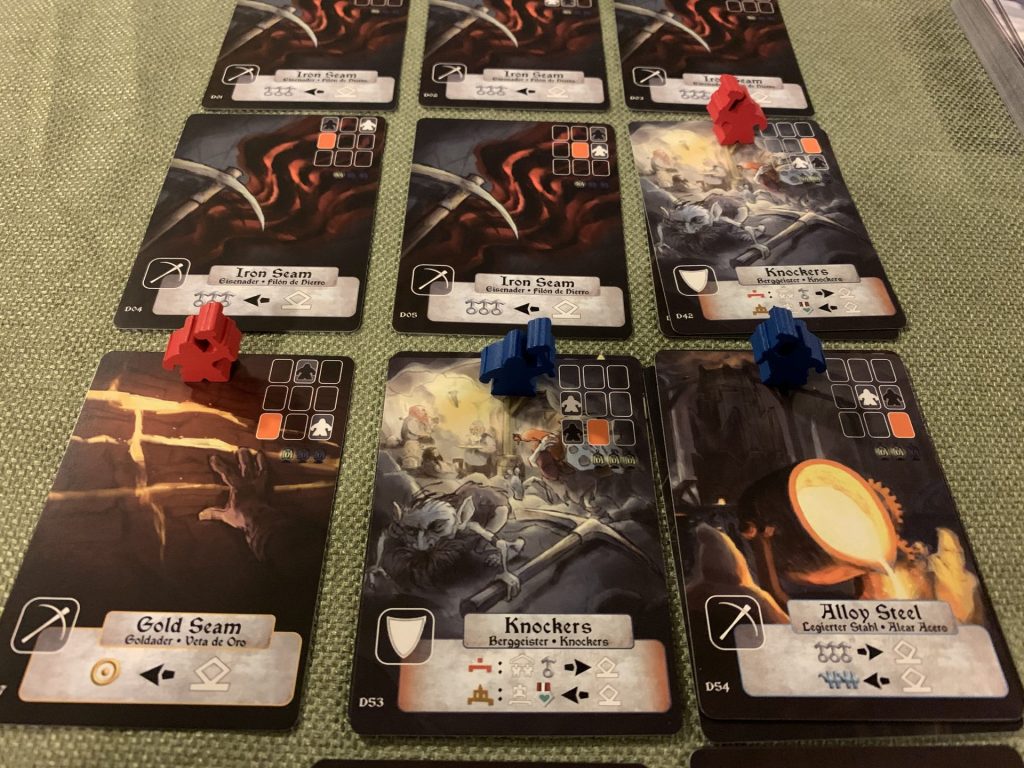
All that Glitters
Dwarf is quite the nice-looking little package. The dwarf meeples are shaped to represent little dwarfs with hammers and pickaxes, there are different sized cubes for each amount of resources, and the card art is spectacular. The monster art in particular is worth taking a good look at. The first few times through we were picking up cards to examine them in detail. The artist, Lars Munck, did a wonderful job.
In the end, I really think Dwarf is an excellent filler game. It makes for some good competitive decision making, it has pretty art, and it doesn’t overstay its welcome. This is definitely a mountain that’s worth spelunking.




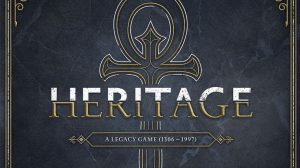

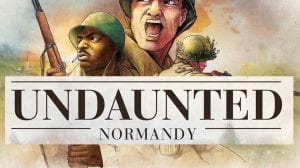




Add Comment